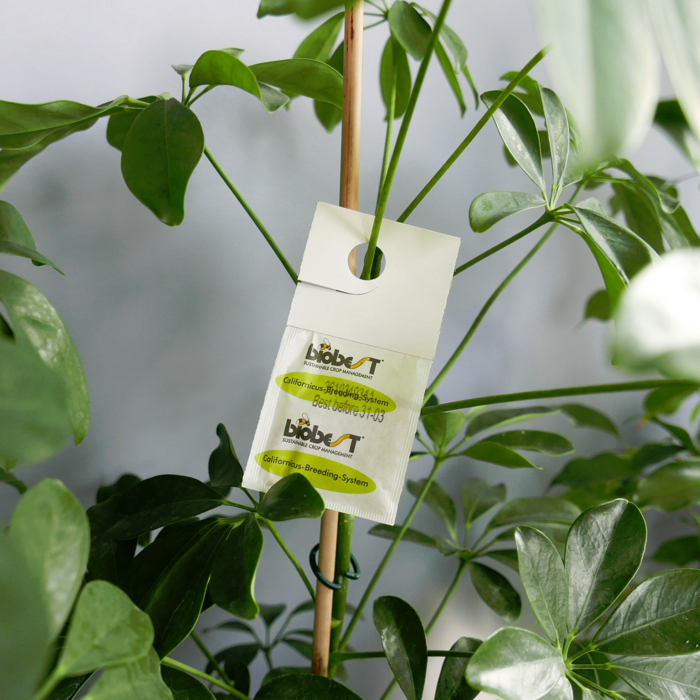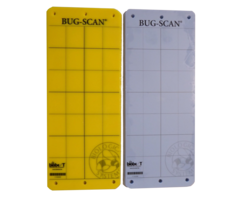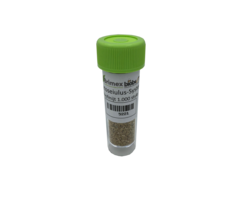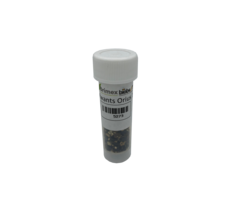Brimex BioBest - Californicus Breeding System (Preventive Spider Control)

Brimex BioBest - Californicus Breeding System (Preventive Spider Control)
With the Brimex BioBest - Californicus Breeding System you have predatory mites delivered in breeding sachets that multiply and sprout during 6 weeks. Each sachet contains a minimum of 100 predatory mites that feed and reproduce, resulting in an outgrowth of 1000 predatory mites over a period of 6 weeks. The breeding bags are designed so that you can easily hang them on your crop.
How do you recognize spider mites?
Spider mites are yellow-brown mites of barely half a millimeter in size and can be recognized by the two dark spots on their flanks. The adult female mites hibernate in the greenhouse or in the garden. In spring, these mites are a threat to your crop again. These predatory mites feed on the underside of the leaves by sucking up the sap of the plant. Clearly visible white dots are formed there. In case of a serious infestation the whole leaf disc can turn pale and often a silky spinning appears on the underside of the damaged leaf. Especially in warm weather and dry air, spider mites will expand extremely quickly. Depending on the temperature, the life cycle of spider mites can last from 15 to 30 days.
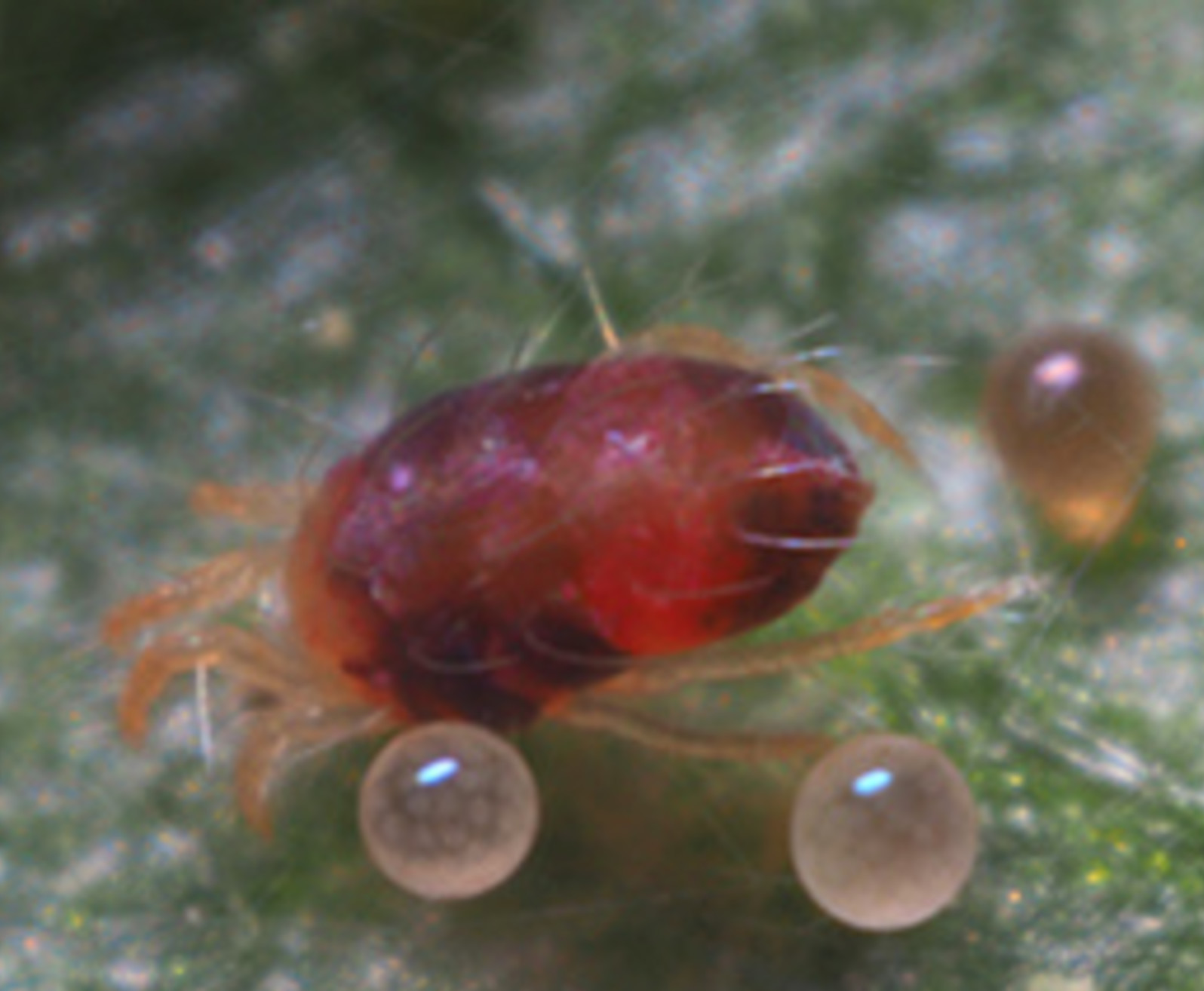
What are Amblyseius Californicus predatory mites?
- Predatory mite against different spider mite species
- Efficient control of all stages of greenhouse spider mite Tetranychus urticae
- Also useful in controlling mollusc mites such as begonia mite and cyclan mite
- Supplied in breeding sachets
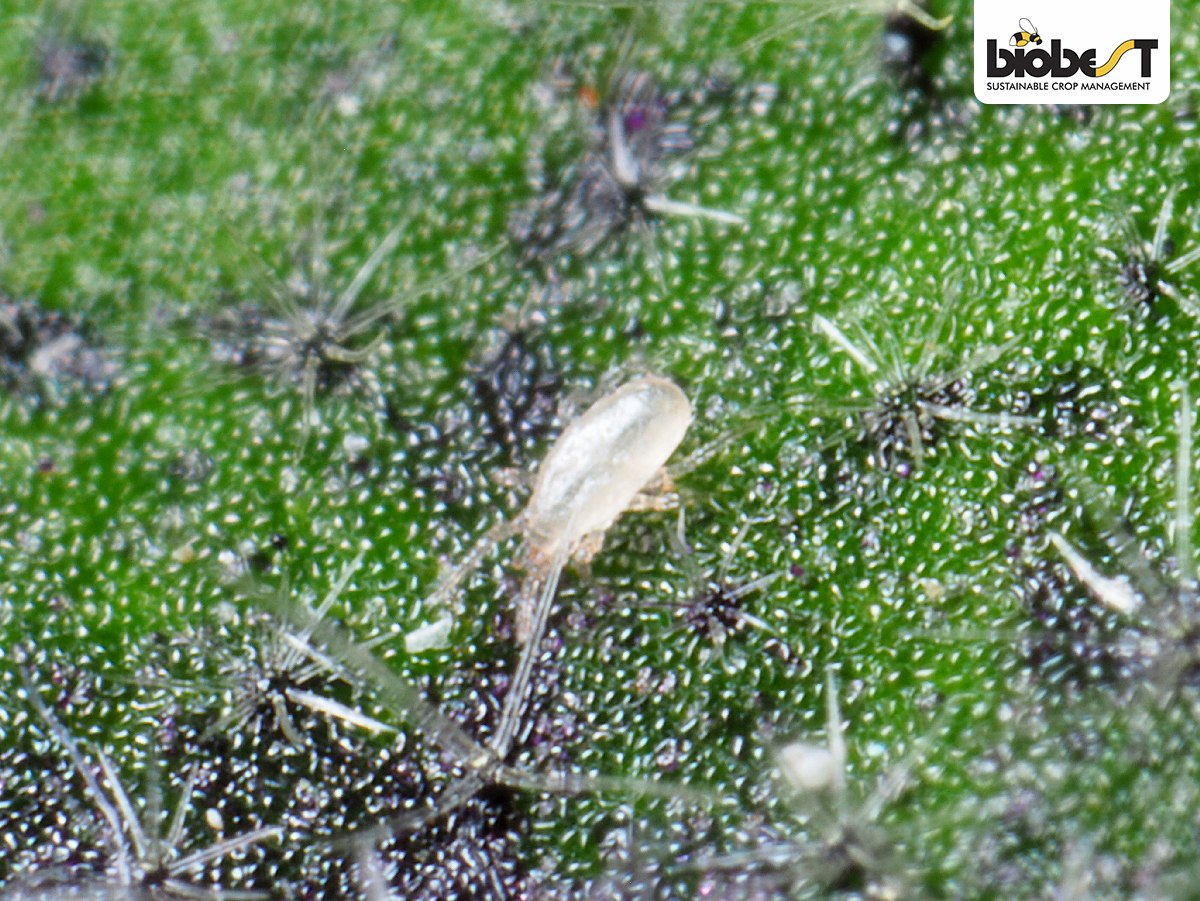
Amblyseius Californicus predatory mites advantages
- These predatory mites prefer greenhouse spider mites, but also survive on other mites, thrips and pollen
- Most effective at low prey densities
- Less sensitive to hot and dry conditions
- Also survives in colder conditions
- Survive also on pollen or even for a while without food if prey is missing
How does the Amblyseius Californicus control?
- The predatory mites eat an average of 5 prey per day
- Adult predatory mites prefer larvae and nymphs of glasshouse spider mites
- The Amblyseius Californicus larvae mainly eat the eggs of red spider mites
In which crops can the Amblyseius Californicus be used?
- Floriculture
- Vegetable cultivation
- Small fruit


